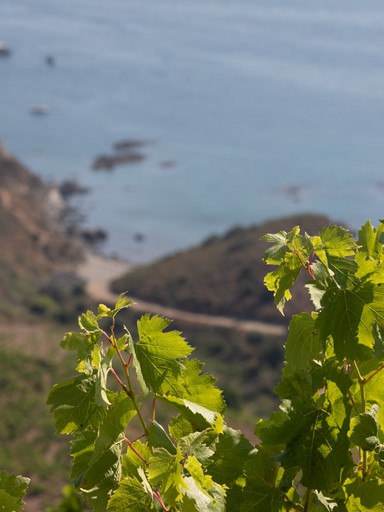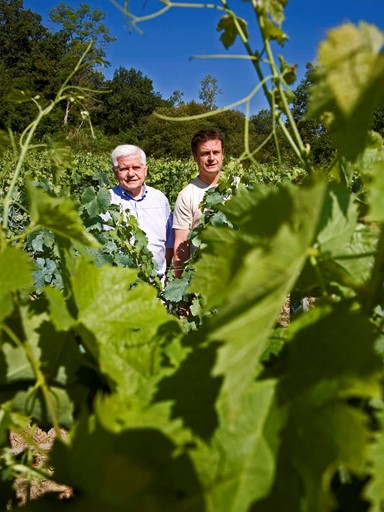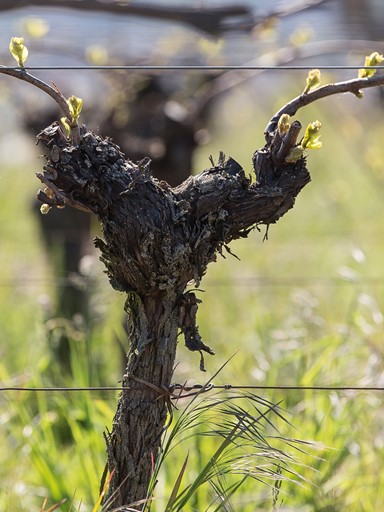
What is Biodynamic wine?
Part Two: The Cosmos
Winemaking by the moon, the sun and the stars...
In part one of this article, we discussed the effects of biodynamics on quality, taste, and terroir. In part two, we look at the significance of the cow horn, winemaking by the moon, the sun, the stars, the biodynamic calendar, and the key differences between biodynamic and organic wines. To conclude, we look at certification in biodynamic and organic wines.
What is the significance of the cow horn?
As we know, biodynamics is about giving life and the transfer and interplay of energy within the vineyard's co-dependent, biodiverse, ecosystem. The significant act of burying a cow horn and filling it with high-quality cow manure is known as preparation 500. This takes places every autumn on a descending moon, also known as a root day in the biodynamic lunar calendar. The horns are left for six months until Spring. While the moon is descending, its gravitational force is at its strongest. As it descends it brings energy down to the ground to activate life in the soil.
But why a cow horn? Firstly, it acts as one of the most efficient and practical vessels to bury high-quality cow manure. Glass, tin or even earthenware pots would not allow the manure to decompose correctly, meaning that after six months of being buried in the ground, you would dig up mouldy, stinky cow manure. As biodynamic farmers did in the early 1920s, using a cow horn will enable the manure to decompose into high-grade topsoil consistency, also known as humus. Humus is a dark soil-like substance that remains once the organic matter has decomposed. It contains highly concentrated nutrients that are crucial for healthy soil and what could be considered the life-giving nectar of biodynamic preparations.
Secondly, the horns are considered to be a vital organ of the cow. They are essential to the health of the cow and explain why they became so weak when farmers removed them, to make space in the grotesque cramped conditions in which they were kept in the days of mad cow disease. Hence why they were fed bovine meat to strengthen them back up - little did they know!
Another point of interest is the cows strong bond with the earth, together with her female energy of fertility which further enhances the notion of bringing life back down into the soil. The cow has been a life force to humankind through her milk, meat, and her fertile manure for centuries; considered sacred by Hindus, Jains and Buddhists in India and civilisations dating back to the ancient Egyptians. This may go some way in explaining why Steiner chose cow horns over that of a goat or a bull.
Winemaking by the moon, the sun, and the stars - what does it really mean?
To grasp this idea, we are required to look at the processes that created the vine rather than looking at the vine itself. As Nicolas Joly so accurately describes, in his example of a master pastry chef, “what interests us is the chef more than the cake itself. To understand life, we must leave matter behind and focus on understanding the system that gives life to the Earth.”
Joly explains that “our lovely planet does not possess life; it receives it by belonging to a solar and stellar system. Without them, the Earth would die.”
Based on the notion that Earth receives life and does not possess it, its power relationships are orchestrated by the solar system that generates energy, which can be simplified by the terms ‘solar’ and ‘gravity’. These forces echo complex movements from the planets. Their rotations and their movements impact life on Earth and especially that of plants. Photosynthesis is itself an illustration of this law of energies. But as Jean Pierre Amoreau of Château Le Puy explains in his book 'Plus pur que de l'eau' (purer than water), “The plant world is almost unknown to humans compared to other worlds, like the animal world - they have so much to teach us.” Amoreau refers to the German Forester Peter Wohlleben who explains in his book The Hidden Life of Trees - that trees carry messages to one another by communication networks organised by a mutual symbiotic association between a fungus and plant and sometimes through noises and smells. “We need a plant world in harmony with itself, and the same is true of the vines,” Says Amoreau.

“It is the flow of energy that promotes life in addition to solar energy. These energies produced by the cosmos which we do not know how to see, or name, are the basis of biodynamics.”
Jean Pierre Amoreau of Château Le Puy

What is the biodynamic calendar?
Château de Béru is home to one of two remaining lunar calendars of its kind dating back to the 15th century. Monks used the lunar calendar to guide them in their planting endeavours. They recognised the influence of power from the sun, the moon, the planets and stars, when performing key tasks in the vineyard, such as choosing which days were most favourable to harvest or prune. These tasks would be timed according to the optimum moment in the celestial cycles, therefore harnessing the energy and power transmitted from the cosmos.
Have you ever thought about how you feel when it’s a full moon? The moon is strong enough to create ocean tides; more babies are born around the full moon.
The lunar calendar is split into four components: flower days and fruit days are the optimal days to drink and taste wine, whilst leaf and root days are the least favourable. Root days are when the moon is orbiting in any of its earth signs, leaf days are when the moon is in any of its water signs, while flower days are when the moon is in its air signs and so recommended for enjoying aromatic wines. Fruit days are when the moon is it its fire signs and the optimal wine tasting day. A root day is ideal for planting vines, while a leaf day is best for pruning.
“The vine is one of the few fruit trees strictly linked to the season. The earth forces dominate the vine,” says Nicolas Joly.
“We use concoctions of nettles, willow and horsetail as a kind of herbal « tea » (…) given in rhythm with the phases of the moon to help to reinforce the vines natural immunity”.

What is the difference between biodynamic and organic wine?
In a nutshell, organic wine refers to wine made from organic grapes. There should be no chemical fertilisers, pesticides, fungicides or herbicides, and the treatments that are applied throughout the viticultural year will be accredited by one of the official organic bodies. However, is it worth pointing out that the EU has strict guidelines on organic farming, but separate countries within the union have rules of their own, which leaves room for interpretation.
It is also important to note that there isn't much difference in what an organic grower can do in the wine cellar compared to a conventional one. For example, cultured yeast made in a laboratory can be introduced as opposed to indigenous yeasts. When one modifies something natural with something alien, there is a lack of harmony.
“The intent to transfer a sense of place into your glass is everything that we stand for,” says Frédéric Grappe.
In contrast, biodynamics is governed by a universal body known as Demeter - named after the Greek goddess of the earth's harvest and fertility.
Nicolas Joly explains that with biodynamics, “we are connecting the vine to the frequencies it needs—like tuning a radio, we are tuning the plant to the frequencies that bring it life. Organics permit nature to do its job; biodynamics permits it to do its job more. It is very simple.”
Claude Bourguignon, France's most famous soil microbiologist, argues that he can always measure the positive effects of biodynamics practices in the soil through deeper and thicker vine roots and increased soil organisms. Still, he cannot explain why biodynamic soil contains so much more life than organic soils. But perhaps Joly goes some way in explaining this... “what one likes in a wine or a painting is what comes from the qualitative, celestial or solar world. That is why we rejoice in it. Art is an elevation of the material world. In agriculture, it is the same thing.”
Biodynamic and Organic Certification
So how do you know if a wine is organic or biodynamic? Some winemakers will apply for accreditation to make it easier for wine drinkers to identifying when faced with a wall full of wines to choose from. Many of you will know to look out for a small green logo that represents organics, and the Demeter logo can take several forms.
However, many winemakers choose not to put the logo on their labels even if they are accredited (for example, Le Casot Des Mailloles). "Essentially, it boils down to trust from the person or shop that you’re buying your wines from, something which has been completely destroyed by current distribution channels and needs to be reinstated. Certification should be the other way around. Why should biodynamic and organic wines be segregated to one corner of the shop? Or little green symbols be displayed on menus in restaurants signalling the promise of organic and biodynamic practices? It’s the mass-produced wines that are filled with chemicals that should come with a warning sign.” says Frédéric Grappe.
Jean Pierre Amoreau explains that he is not a fanatic of organic products just for the sake of organic purposes. “We humans must lead this as it is in harmony with our environment and critical to our habitat. If the way to get there is through organic farming and biodynamics, let us hurry to take this path!”
"Biodynamics exposes the intellectual and environmental bankruptcy of chemical-dependent conventional viticultural regimes.”
Dr Jamie Goode, Plant Biology PhD and wine writer.
